Introduction to Hand Building with Pinch Pots
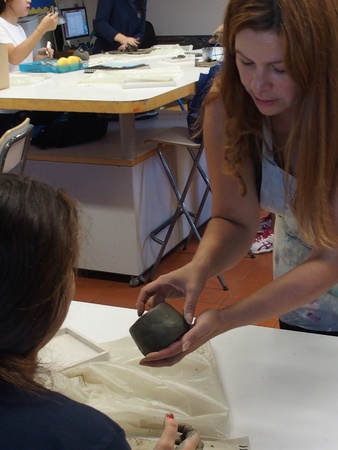
Hand building with pinch pots is a fundamental pottery technique that involves shaping clay with your hands into various forms without using a potter's wheel. This method is ideal for beginners as it requires minimal tools and provides a direct way to understand and feel the clay's properties. (Vocabulary list below)
Step-by-Step Breakdown:
- Prepare the Clay: Begin by wedging your clay to remove any air pockets and ensure a uniform consistency.
- Form a Ball: Roll the clay into a smooth ball. The size of the ball will determine the size of your pinch pot.
- Create a Thumb Hole: Press your thumb into the center of the ball to start forming the pot's interior.
- Pinch and Turn: Using your fingers, gently pinch the clay between your thumb and fingers, turning the ball as you go to create an even wall thickness.
- Shape the Pot: Continue to pinch and rotate until you achieve the desired shape and thickness. Smooth out any rough edges or bumps.
- Additive: Using scoring and slip your can add elements to your pint pot. Try to use coils and slabs to add additional elements.
- Subtractive: Using the tools you can carve into your print pot to decorate it, add texture and alter its shape.
- Dry and Finish: Allow your pinch pot to dry slowly to avoid cracks. Once bone dry, it can be bisque fired, glazed, and fired again.
Pinch Pots


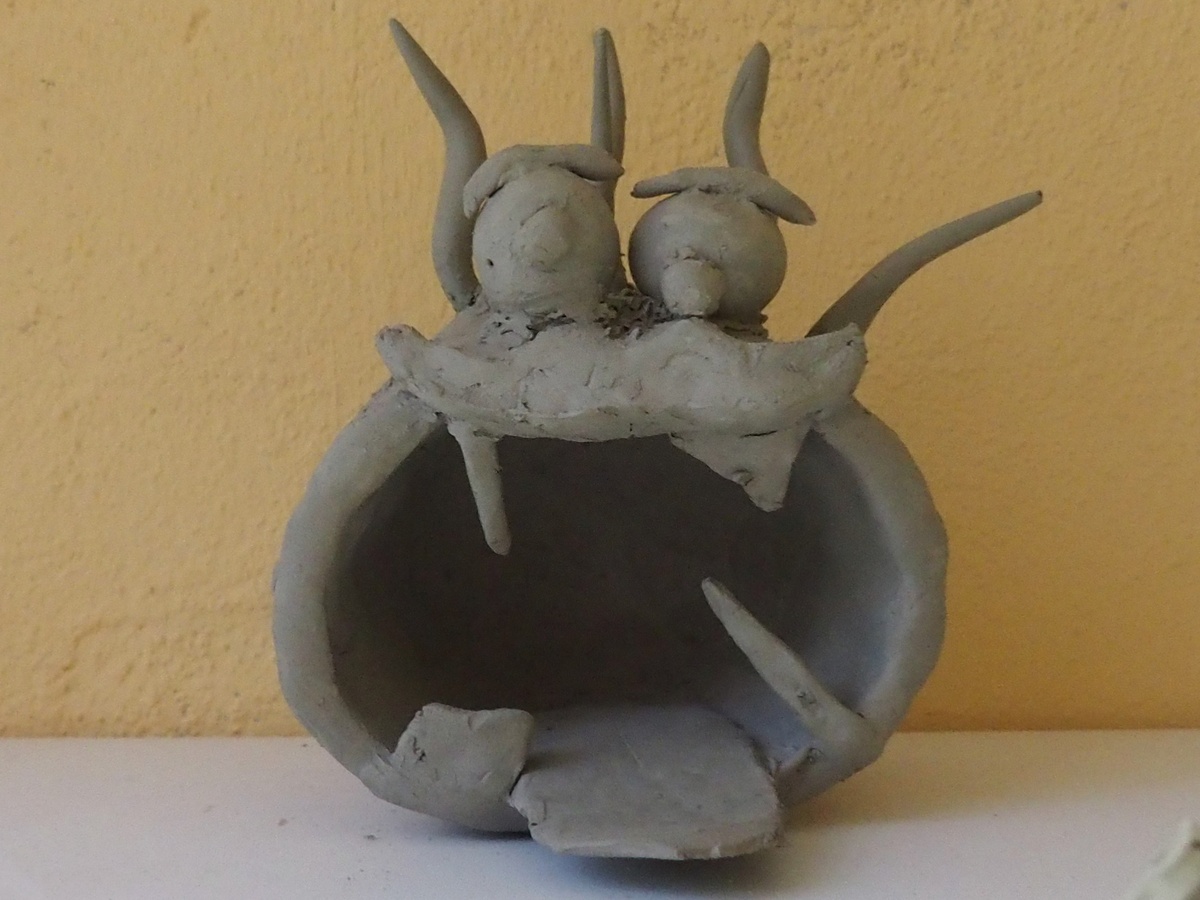
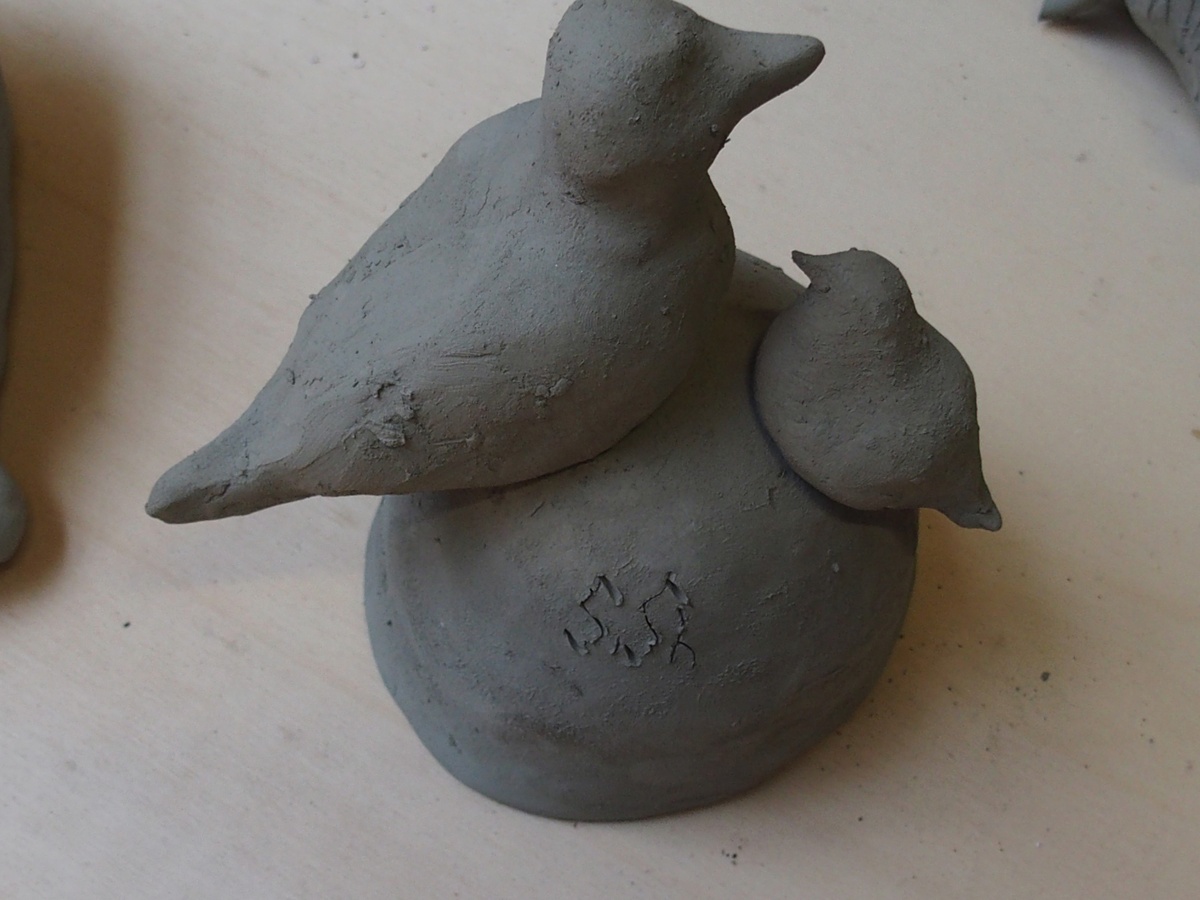

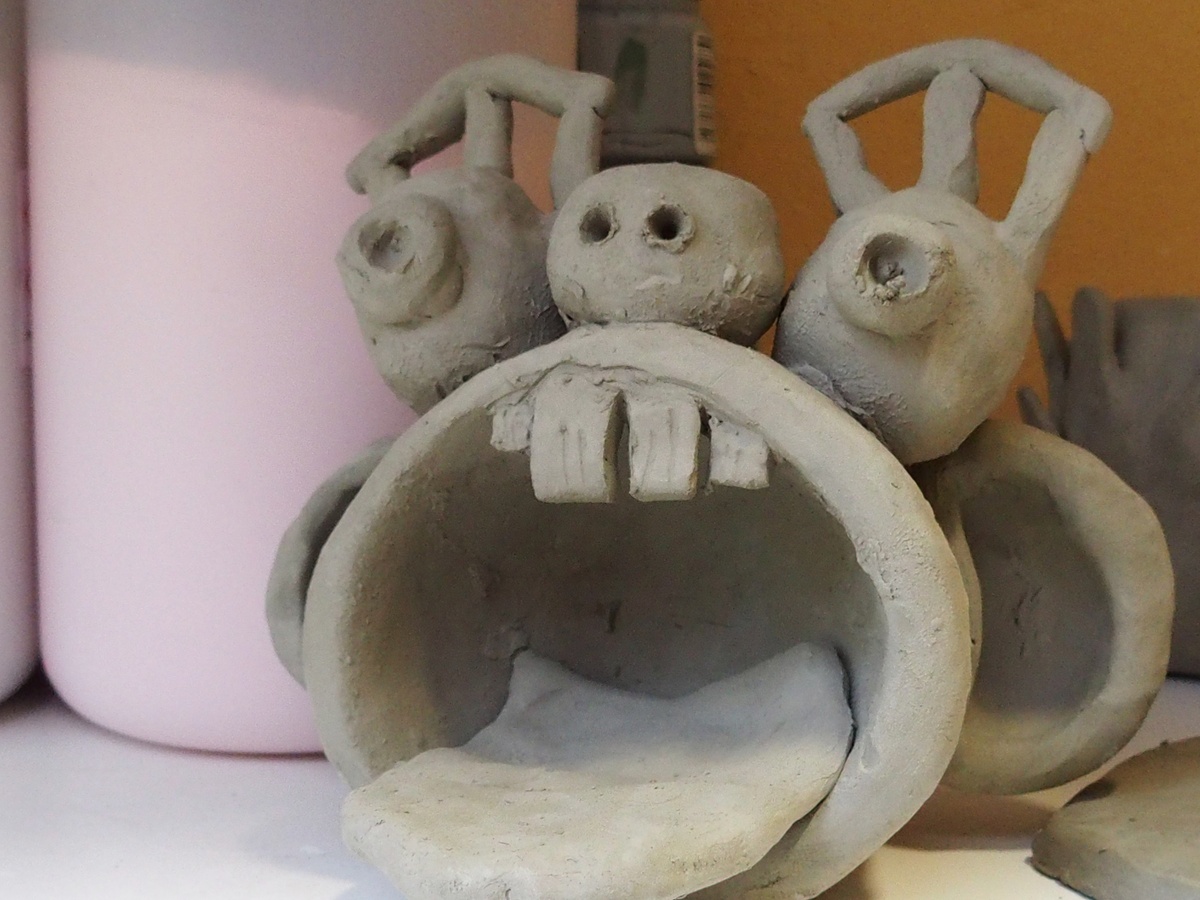
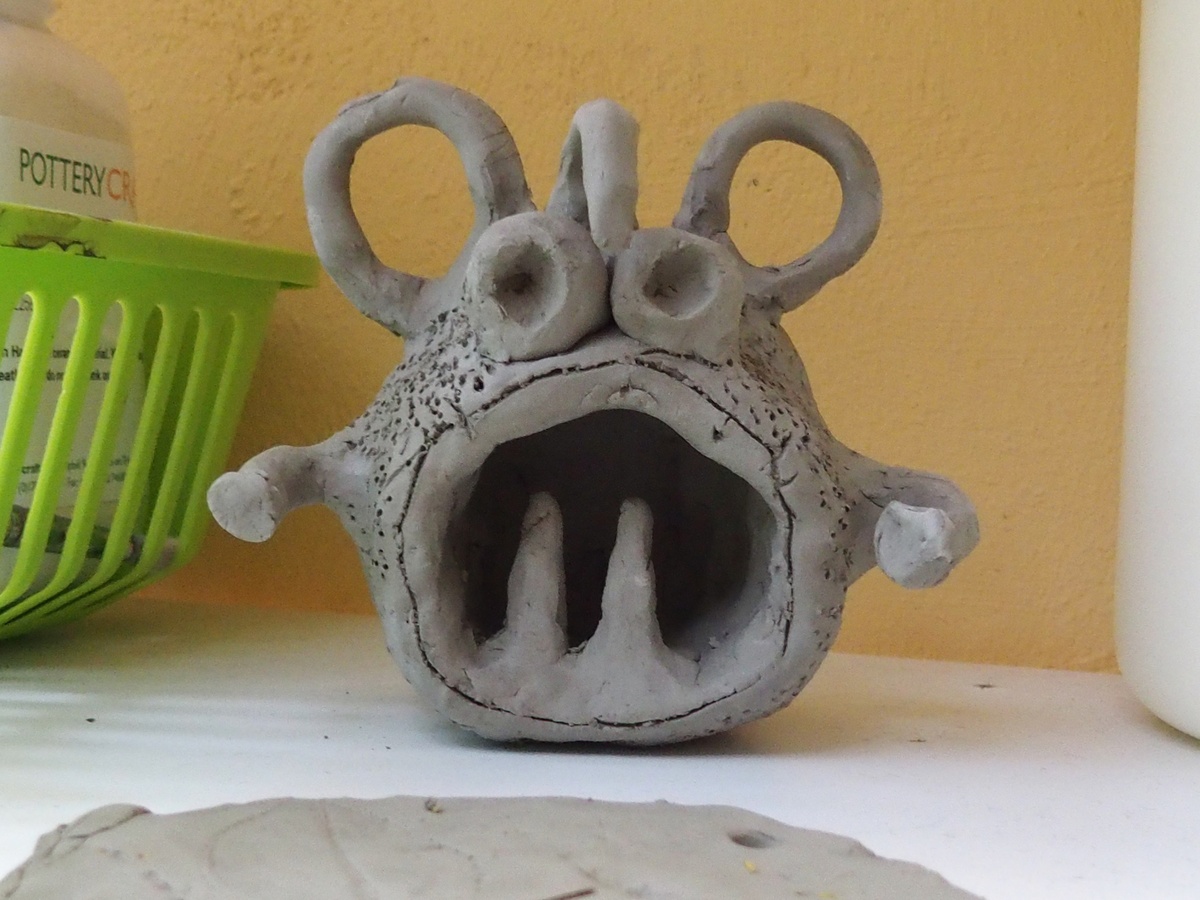

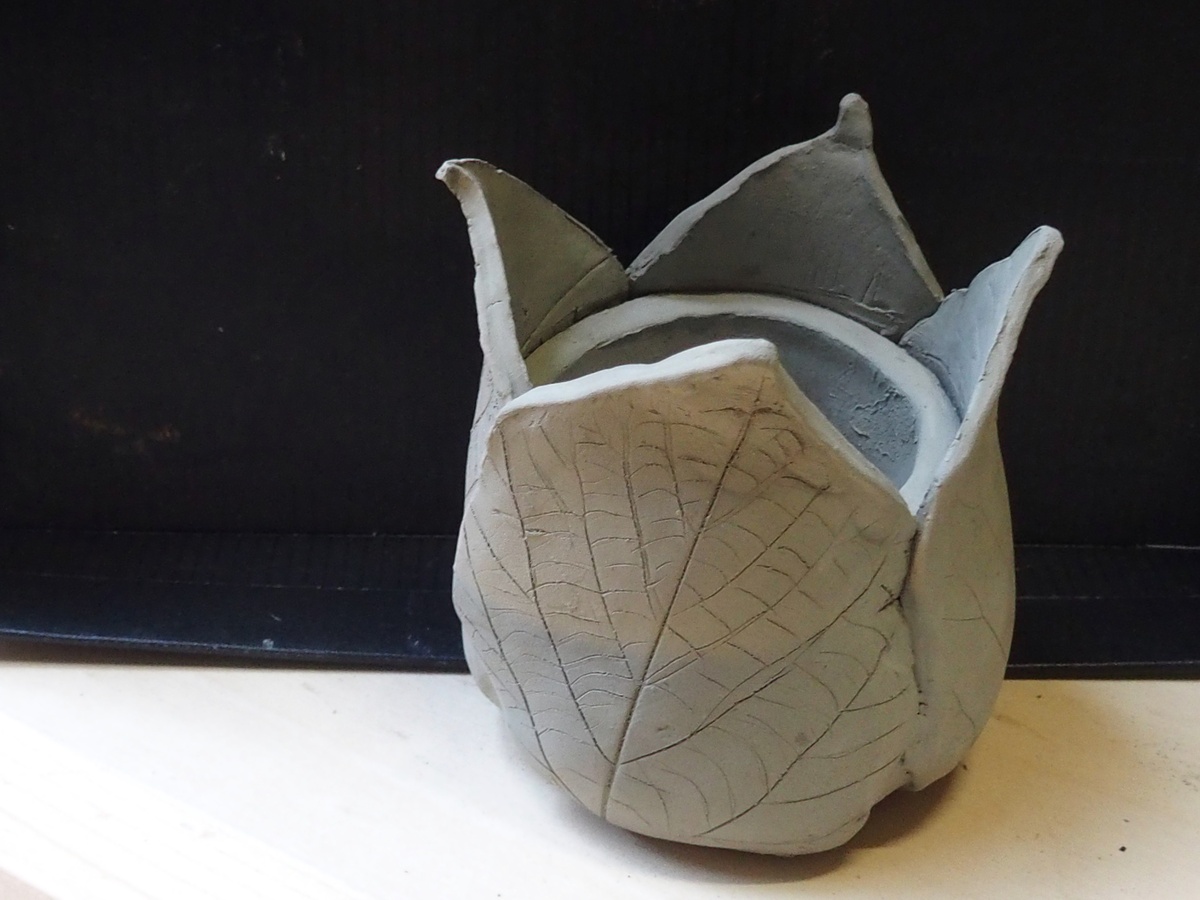
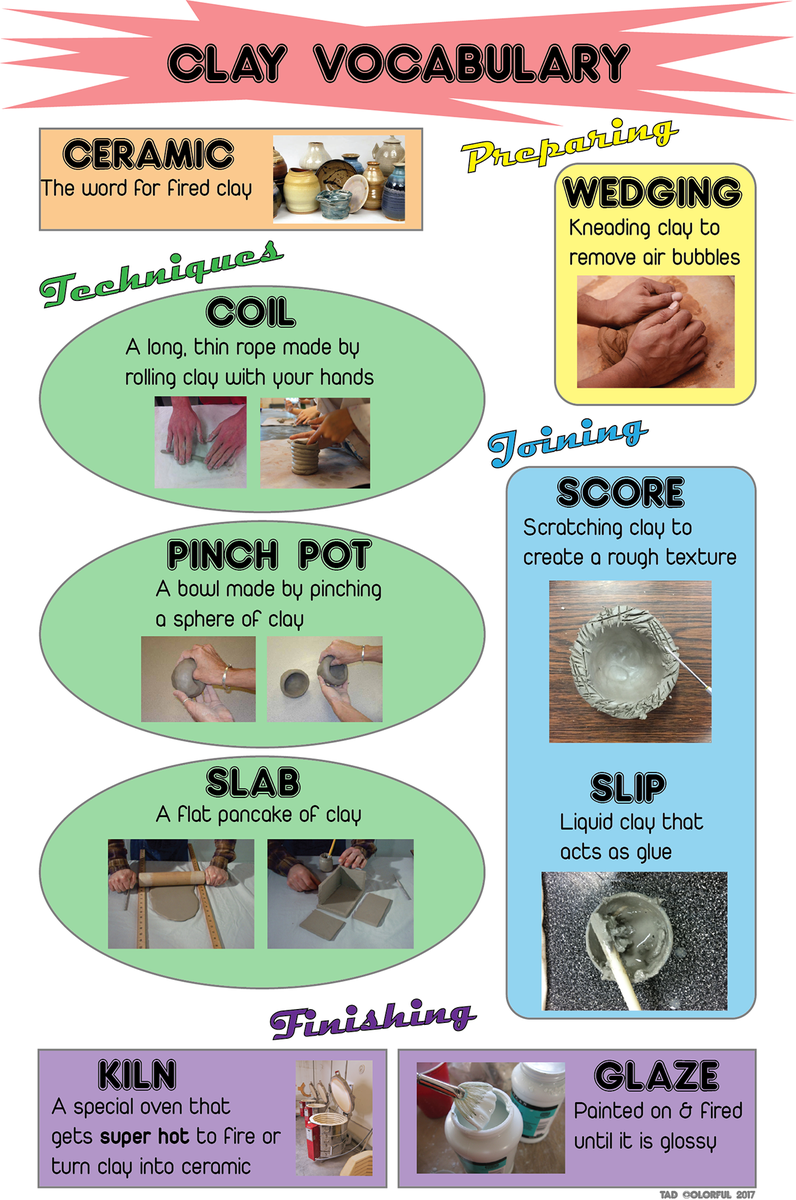
Credit: https://www.behance.net/gallery/51569215/Ceramics-Overview-Poster Thomasina Durkay
Ceramics Vocabulary
- Wedging is a technique in ceramics where clay is kneaded to homogenize it, eliminate air bubbles, and even out moisture content. This process makes the clay more pliable, reduces imperfections, and prevents cracking or warping during drying and firing.
- Slip - Liquid clay used for casting ceramics in molds or for decorating.
- Score and Slip - A method used to join two pieces of clay together; surfaces are scored (scratched) and slip (liquid clay) is applied before joining.
- Coil - A handbuilding technique where clay is rolled into long, rope-like strands that are coiled and joined to build up walls of vessels or sculptures.
- Handbuilding - A method of making pottery and sculpture without a potter's wheel, using methods like pinch, coil, and slab techniques.
- Pinch Pot - A basic form of handbuilding that involves creating pots by pinching and shaping the clay with your fingers.
- Glaze - A glass-like coating that can be applied to bisque ware to color, decorate, or waterproof an item.
- Underglaze - Colored decoration applied on greenware or bisque ware before glazing.
- Kiln - A furnace or oven for firing pottery, made to withstand high temperatures.
- Cone - Pyrometric cones used to measure the temperature within the kiln during firing.
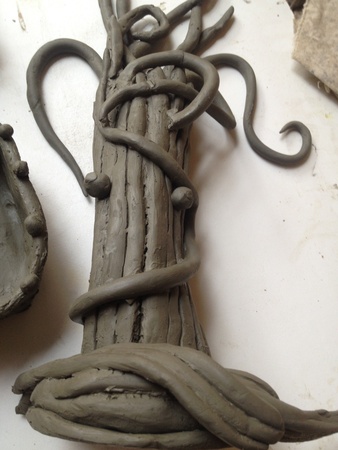
Coils
Joining Coils: When building with coils, each new coil must be securely attached to the previous one using scoring and slipping. After placing a new coil, score the contact points on both the new coil and the existing structure, then apply slip. Press the coil gently but firmly to ensure it bonds well, smoothing the join with your fingers or a tool to ensure a seamless surface.
Stages of Clay
- Leather-hard - The stage of drying clay when it is stiff enough to handle but still moist enough to be further manipulated.
- Greenware - Unfired pottery that is still drying and ready to be bisque fired
- Bisque - Unglazed clay, fired once at a low temperature to prepare it for glazing.